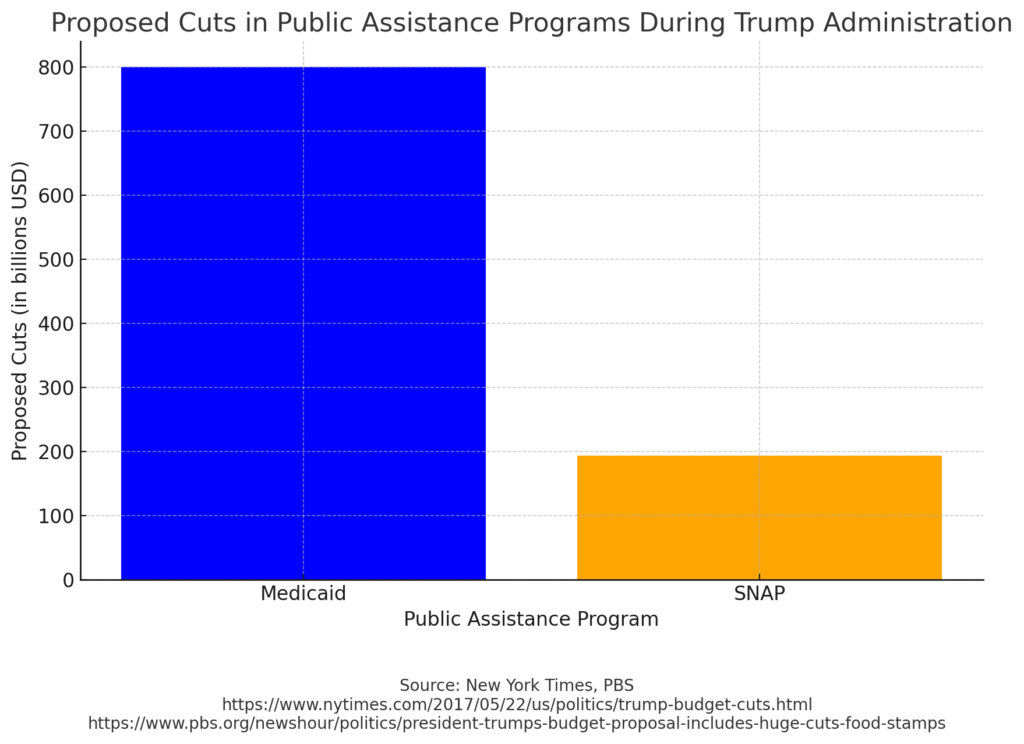
Black children in the U.S. face a significant poverty gap compared to white children due to stagnant wages, rising living costs, and systemic racism. Comprehensive solutions are needed.
By Darius Spearman (africanelements)
Support African Elements at patreon.com/africanelements and hear recent news in a single playlist. Additionally, you can gain early access to ad-free video content.
| Key Takeaways |
|---|
| Black children face a significant poverty gap compared to white children. |
| Systemic racism, stagnant wages, and rising living costs are major contributors. |
| In-kind benefits help but are insufficient to close the gap. |
| Cash benefits like Social Security show racial disparities. |
| Trump-era policies reduced public assistance. |
| Biden’s American Rescue Plan temporarily reduced Black child poverty. |
| Long-term solutions require addressing systemic inequalities. |
Factors Contributing to the Poverty Gap
Stagnant Wages and Rising Living Costs
Black families often struggle with stagnant wages and rising living costs, intensifying economic hardships. Black workers are overrepresented in low-wage industries and occupations, and even with comparable education, they receive lower wages than their white peers. This wage disparity significantly impacts their ability to achieve financial stability. The median income for Black households is consistently lower than that of white households, which limits the ability to save and invest for the future (Urban Institute).
Systemic Racism
Structural barriers, including racial discrimination in the labor market, housing, and education, contribute to economic disparities between Black and white families. These barriers limit upward mobility and perpetuate poverty across generations. For example, discriminatory hiring practices and wage gaps reduce the economic opportunities available to Black workers. Additionally, redlining and other discriminatory housing practices have historically prevented Black families from accumulating wealth through homeownership.
“Poverty results from structural barriers, not personal choices. Safety net programs should reflect this fact” (Urban Institute).
Multigenerational Poverty
Black families experience higher rates of multigenerational poverty, with less upward mobility and more downward mobility compared to white families. This persistence of poverty across generations is a significant factor in the ongoing economic disparities. Research shows that Black children born into poverty are more likely to remain in poverty as adults, perpetuating a cycle of economic disadvantage (Brookings).
Impact of Government Assistance
In-Kind Benefits
Programs like housing subsidies and food assistance disproportionately benefit Black children. However, these in-kind transfers are often insufficient to close the poverty gap significantly. While these programs provide critical support, they do not address the root causes of economic inequality. For instance, housing subsidies help families afford stable living conditions, but they do not increase household income or address employment barriers.
“The role of government transfers in the child poverty gap by race is significant, but not sufficient to close the gap entirely” (Diversity Data Kids).
Cash Benefits
Cash-based programs, such as Social Security, show disparities in benefits received by Black recipients compared to white recipients. Black adults receive much lower annual and lifetime Social Security benefits due to structural racism that limits employment and earnings opportunities. The Social Security system, which is based on lifetime earnings, often reflects the systemic inequalities present in the labor market.
“How can changes to Social Security improve benefits for Black and Hispanic populations?” (Urban Institute).
Policy Changes and Their Effects

Trump Administration
The Trump administration proposed significant cuts to federal affordable housing programs and increased work requirements for welfare programs. These policies threatened to reduce public assistance for low-income families, including many Black households. The proposed cuts would have significantly reduced the availability of affordable housing, exacerbating the housing crisis for many Black families.
“The Trump administration’s impact on public and assisted housing was marked by proposed cuts and increased work requirements” (American Bar Association).
Biden Administration
The American Rescue Plan (ARP) under President Biden temporarily reduced child poverty rates, including a 52% reduction in Black child poverty, through expanded monthly Child Tax Credits and other measures. However, these benefits were temporary and did not address the long-term systemic issues. The ARP’s success highlights the potential impact of comprehensive support programs, but it also underscores the need for sustained policy changes.
“The ARP grew the economy, reduced poverty, and eased financial hardship for millions” (American Progress).
Specific Policies Under Trump that Reduced Public Assistance for Black Families
During President Donald Trump’s administration, several policies were implemented that reduced public assistance for Black families, impacting their economic stability and access to essential services. Here are some specific policies and their effects:
Cuts to Social Safety Net Programs
- Medicaid: Trump’s budget proposals included significant cuts to Medicaid, totaling over $800 billion over a decade. These cuts would have reduced access to healthcare for low-income families, disproportionately affecting Black families who rely on Medicaid for medical services. Reduced funding for Medicaid meant fewer resources for preventive care, treatment, and support services, which are vital for maintaining health and well-being (New York Times).
- Supplemental Nutrition Assistance Program (SNAP): The administration proposed cutting $193 billion from SNAP over ten years, which would have driven millions of people off food stamps. This reduction in food assistance would have increased food insecurity among Black families, making it harder for them to provide nutritious meals for their children and maintain overall health (PBS).
- Temporary Assistance for Needy Families (TANF): The Trump administration sought to impose stricter work requirements on TANF recipients, which could have led to many Black families losing access to this critical cash assistance program. The added work requirements often ignored the challenges faced by low-income families, such as limited job opportunities and childcare needs (Heritage Foundation).
- Housing Assistance: The administration proposed cuts to federal affordable housing programs and increased work requirements for housing assistance. These changes threatened to reduce the availability of affordable housing and increase homelessness among Black families. Affordable housing is crucial for providing stable living conditions and reducing stress related to housing insecurity (American Bar Association).
Regulatory Changes and Executive Orders
- Work Requirements: An executive order signed by Trump in 2018 directed federal agencies to strengthen work requirements for various welfare programs, including Medicaid, SNAP, and housing assistance. These requirements made it more difficult for low-income individuals, including many Black Americans, to qualify for and maintain benefits. The increased bureaucratic hurdles often led to eligible families losing access to essential support (NPR).
- Public Charge Rule: Changes to the public charge rule made it harder for immigrants to obtain green cards if they were likely to use public benefits like SNAP or housing aid. This policy disproportionately affected Black immigrant families, discouraging them from seeking necessary assistance for fear of jeopardizing their immigration status. This led to increased economic hardship and reduced access to critical services for many families (NPR).
Impact on Black Families
These policies collectively reduced the safety net for Black families, exacerbating economic disparities and increasing poverty rates. The cuts to Medicaid, SNAP, and TANF, along with stricter work requirements, made it more challenging for Black families to access essential services and support, leading to higher levels of food insecurity, lack of healthcare, and housing instability. The combination of reduced public assistance and increased eligibility barriers widened the poverty gap and deepened systemic inequalities.
Long-Term Solutions
Addressing the systemic inequalities that contribute to the poverty gap requires targeted policies, including:
Expanding Safety Net Programs
Increasing funding and accessibility for safety net programs to ensure that all in need can benefit. This includes expanding eligibility criteria and increasing benefit amounts to better support low-income families. Programs like Medicaid, SNAP, and housing assistance need more robust funding to adequately address the needs of Black families.
“The top 12 solutions to cut poverty in the United States include expanding safety net programs” (American Progress).
Creating Good-Paying Jobs
Developing policies that create good-paying jobs and ensure fair wages for all workers, particularly in industries where Black workers are overrepresented. Ensuring equal pay for equal work is essential to reducing economic disparities. Policies that support job training, higher education, and career advancement opportunities can help Black workers secure better-paying jobs (Urban Institute).
Addressing Structural Barriers
Implementing policies that tackle systemic racism in education, housing, and the labor market to promote equal opportunities for Black families. This includes enforcing anti-discrimination laws and investing in communities of color. Educational reforms, affordable housing initiatives, and equitable hiring practices are crucial steps toward leveling the playing field.
Enhancing Social Security
Reforming Social Security to make the benefit formula more progressive and providing additional credits for caregiving and long-term beneficiaries to reduce racial disparities in benefits. Adjusting the Social Security system to better reflect the realities of Black workers’ lives, such as lower lifetime earnings due to systemic racism, can help reduce poverty among Black retirees.
“Education, earnings inequality, and future Social Security benefits must be addressed to reduce racial disparities” (Social Security Administration).
In essence, while temporary measures like the ARP have shown some success in reducing child poverty rates, long-term solutions require comprehensive and targeted policies to address the deep-rooted systemic inequalities that perpetuate the poverty gap between Black and white children in the U.S. It is crucial for policymakers to implement strategies that address both the immediate needs and the structural causes of poverty.
FAQ
Q: What are the main factors contributing to the poverty gap between Black and white children?
A: The main factors include stagnant wages, rising living costs, systemic racism, and multigenerational poverty.
Q: How effective are in-kind benefits in reducing the poverty gap?
A: In-kind benefits like housing subsidies help but are often insufficient to close the poverty gap significantly.
Q: What disparities exist in cash benefits like Social Security?
A: Black recipients receive much lower annual and lifetime Social Security benefits compared to white recipients due to structural racism.
Q: How did the Trump administration’s policies affect public assistance for low-income families?
A: The Trump administration proposed significant cuts to federal affordable housing programs and increased work requirements for welfare programs, reducing public assistance.
Q: What impact did the American Rescue Plan have on Black child poverty?
A: The ARP temporarily reduced Black child poverty by 52% through expanded monthly Child Tax Credits and other measures.
About the author
Darius Spearman is a professor of Black Studies at San Diego City College, where he has been pursuing his love of teaching since 2007. He is the author of several books, including Between The Color Lines: A History of African Americans on the California Frontier Through 1890. You can visit Darius online at africanelements.org.
